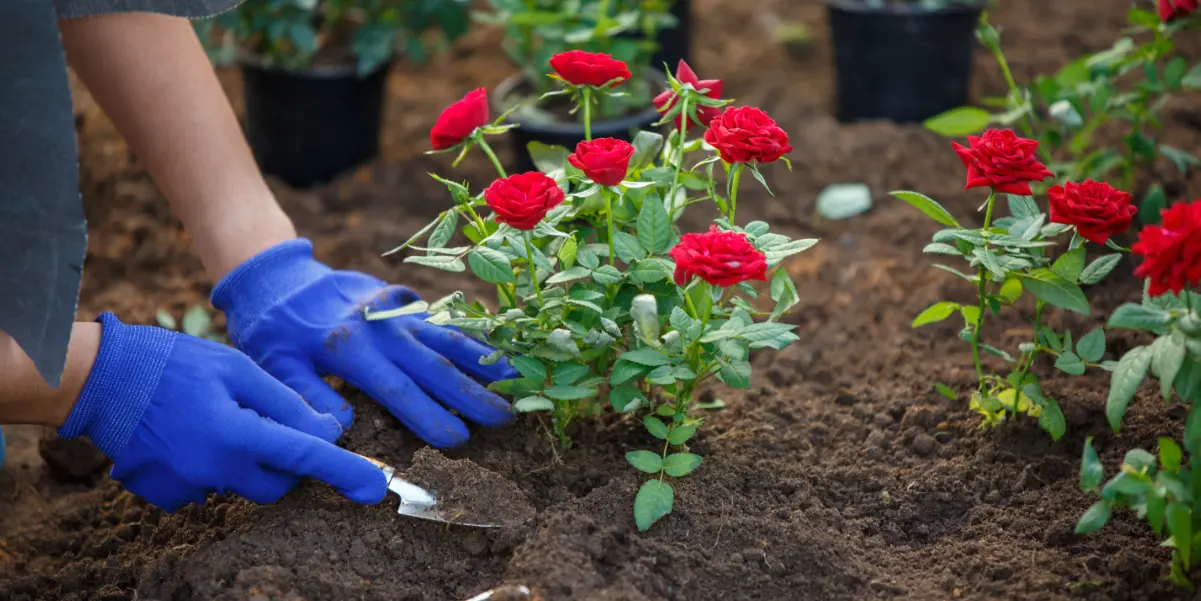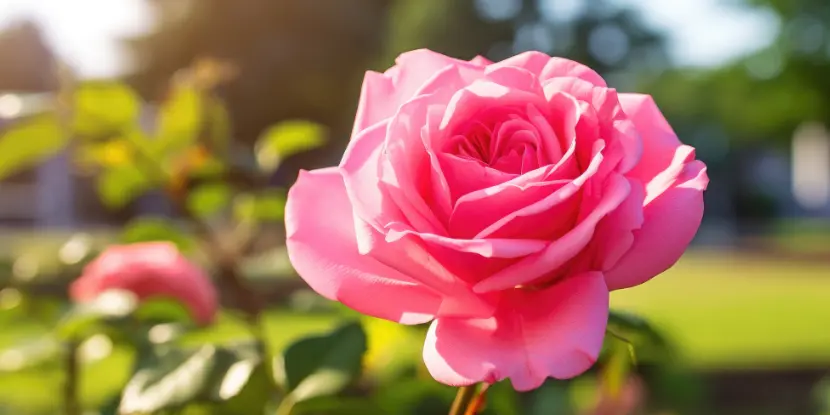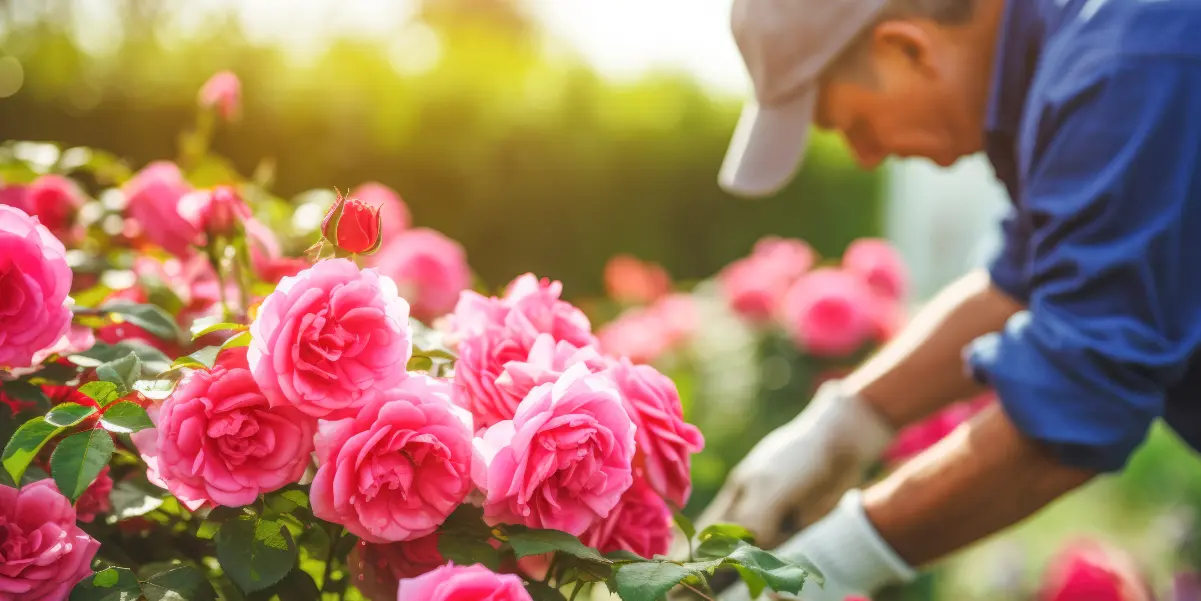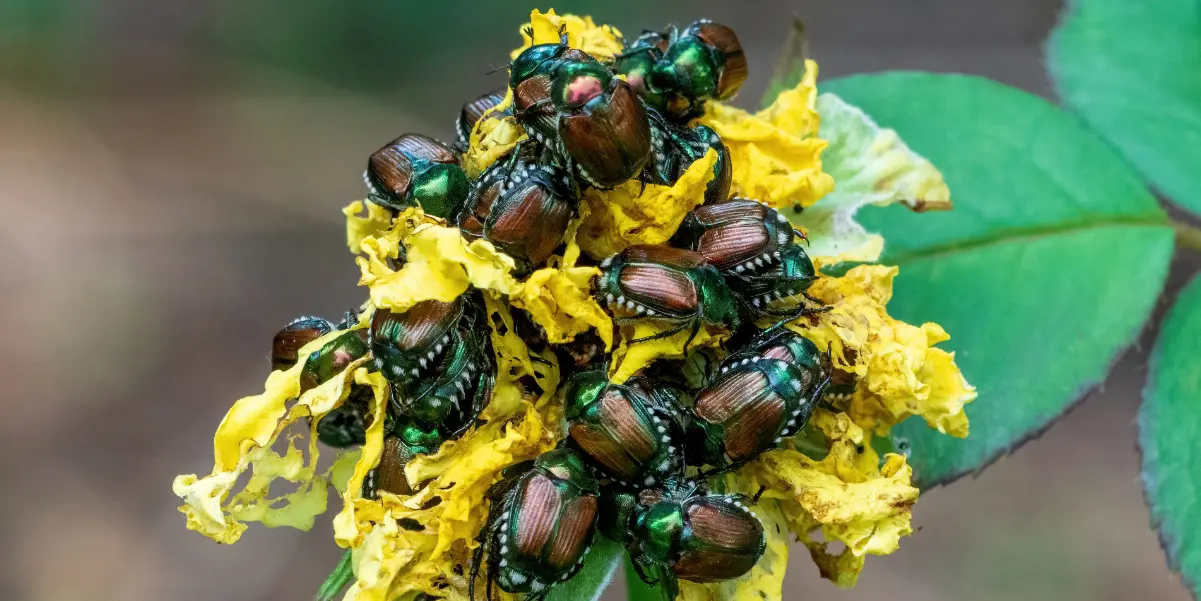“Old roses tend to be stable, long-lived, and sturdy, especially when grown from cuttings. Many show a strong resistance to black spot and other diseases. The unforgettable ‘true rose’ fragrance is not found in the modern hybrids. Old roses have an inherent beauty of form, a quality which does not diminish over the years. This makes them especially useful as landscape plants.”
— Dr. William C. Welch
Thank you, Dr. Welch. Now doesn’t that inspire you to rush outside to plant your own plot of heirloom roses?
Planting Location
Choosing the proper location to grow roses, both old roses and modern hybrids, is critical to producing beautiful, low-maintenance roses.
The area should receive at least six hours of sun each day — in other words, half a day or more.
- Some afternoon shade is desirable for cooling during hot summer months.
- An open, breezy site is preferable to the corner of a cinder block wall or solid wood fence, where air tends to stagnate.
- Good soil drainage ensures healthy, vigorous root growth. You may want to consider a sloped area or raised bed.
Soil Preparation
Southern California’s diverse soil often lacks the ideal conditions for thriving roses. Soil preparation becomes pivotal to ensure robust growth. Optimal soil for rose beds in this region leans towards well-draining, loamy compositions.
- Begin by amending the planting bed with a 4 to 6-inch layer of a blended mixture comprising 2/3 sandy loam and 1/3 soil conditioner.
- Enhance this bed mix by adding 10 lbs of gypsum, 2 lbs of granular soil sulfur, 1 lb of magnesium sulfate, and 1 lb of specialized rose food per 100 sq ft.
- Should you prefer, an all-natural plant food can substitute or complement the commercial rose food at a ratio of 4:1.
- Add 3 to 4 inches of mulch to the bed. It acts as a thermal buffer, preserving moisture, suppressing weeds, and enriching the soil with organic matter — vital for healthy rose growth in Southern California’s varied climates.

A gardener planting young rose bushes.
Rose Plant Selection
Roses for display can be climbers, bush, or dwarf types. Roses for cutting should provide single bud stems for uniform appearance and repeat harvests.
Some varieties that do well in Southern California’s hot, dry climate include:
- Hybrid Tea Roses: Ideal for their long stems and classic blooms, well-suited for the warm California climate.
- Floribunda Roses: The Orange County Rose Society recommends varieties like Julia Child, Oh My!, and Sparkle and Shine.
- David Austin Roses: Certain David Austin varieties like Olivia Rose Austin thrive in Southern California’s dry climate.
- Mary Magdalene and Ambridge Rose: Known to withstand full sun in Southern California’s heat.
- Heat-Resistant David Austin Roses: Recommendations include Olivia Rose Austin for hot, dry conditions in Southern California.

Closeup of a Hybrid Tea Rose bloom.
Rose Maintenance & Care
Growing roses that are the envy of the neighborhood requires a bit of commitment.
Watering Roses
A parched rose is a sad rose. Give your soil a good soaking once a week.
This is critical during the scorching summer months when the ground can dry out faster than usual. We recommended a drip system for consistent watering in hot, dry areas like Southern California.
Keeping Soil Moist
In addition to implementing a drip system, there are several other ways to keep your rose beds nicely hydrated.
- Mulching: Mulch is a rose’s best friend. Not only does it suppress weeds, but it also helps retain moisture in the soil, reducing the frequency of watering. Aim for a 2-3 inch layer around your roses, but be careful not to pile it up against the stems.
- Water-Retaining Crystals: These cheeky little things can absorb and hold onto water in the soil, releasing it gradually. Mix them into your soil at planting time. Remember not to rely solely on them — your roses still need a good drink now and then!
- Soil Amendments: Include organic compost or well-rotted manure in your soil mix. They improve the soil’s water-holding capacity and provide nutrients for your roses.
- Watering Deeply: Instead of frequent shallow watering, water deeply once or twice weekly. This encourages the roots to grow deeper into the soil, where it stays moist longer.
- Avoid Watering During the Day:Water early in the morning or late in the evening when there’s less sun. This reduces water loss through evaporation. Avoid watering the leaves at night to prevent disease development.
Pruning Roses
Prune your roses annually in early January or February, while they’re still dormant.
This will encourage strong growth and abundant flowers when the spring season arrives.
Remove any dead or damaged branches and cut back older canes to promote healthy new growth.
Here’s how to do it:
- Angled Cuts: When pruning, make your cuts at a 45-degree angle, around 1/4 inch above a bud facing the outside of the bush. This helps the plant grow outward, which gives it a nice shape and helps improve air circulation, reducing the risk of diseases.
- Seal the cuts: After pruning, consider sealing the cuts to prevent disease and insect infestations. You can use a special pruning sealant or even household glue.
- Disinfect Your Tools: Always clean your tools before and after pruning. This helps prevent the spread of diseases. You can use rubbing alcohol or a solution of one part bleach to nine parts water.
- Don’t Rush It: Take your time when pruning. It’s an art, not a race. Look at the plant’s growth and consider which stems to remove to get the desired shape. It’s always better to cut less than to cut too much. You can always trim a little more, but you can’t put a cut stem back!
- Prune More Than Once: Although the most aggressive pruning is usually done in the winter or early spring, many roses benefit from several lighter prunings throughout the year. This keeps the plant healthy and encourages more flowers.

A gardener pruning rose bushes.
Fertilizing Roses
For the best results, fertilize your roses every 4-6 weeks during their growing season, which typically spans from early spring to late fall.
Use a balanced fertilizer specifically formulated for roses and follow the instructions on the packaging for application rates.
- Understand the Fertilizer Label: Fertilizers are labeled with three numbers representing the percentage of nitrogen (N), phosphorus (P), and potassium (K) in the product. For roses, look for a balanced fertilizer that offers these three nutrients in equal or nearly equal amounts.
- Assess the Soil pH: Roses thrive in slightly acidic soil with a pH between 6.0 and 6.5. If your soil isn’t in this range, your roses may not absorb the nutrients in the fertilizer effectively. A soil test kit can help you determine the pH.
- Avoid Fertilizer Burn: Never apply more fertilizer than recommended on the package, as this can burn the roots and damage your roses. Also, water your roses thoroughly before and after you apply fertilizer to prevent burn and promote nutrient absorption.
- Slow Release is Good: Consider using a slow-release fertilizer, which releases nutrients over time, providing steady nutrition to your roses.
- Try Organic Options: Organic fertilizers, like compost or fish emulsion, can be an excellent way to feed your roses while improving soil texture and overall health.
- Time It Right: Avoid fertilizing too late in the season, as this can encourage new growth that could be damaged by winter frost. A good rule of thumb is to stop fertilizing about six weeks before your area’s first frost date.
Pest Control
While it might seem like a good idea to chase off every bug near your gorgeous roses, not all insects are out to harm your plants. Some insects serve as crucial pollinators or natural predators of harmful pests.
Bees, butterflies, and some beetles are essential in pollinating your roses, facilitating their bloom cycle. Ladybugs and lacewings are champions at keeping the aphid population in check.
However, there’s the not-so-nice insect crowd too. Aphids and Japanese beetles can be a rose gardener’s worst nightmare.
Aphids are tiny insects, usually green, that love to hang out on the undersides of rose leaves. They’ll suck the sap right out of your roses. You might notice a sticky residue they leave behind, known as honeydew, which can lead to sooty mold.
Japanese beetles, on the other hand, are hard to miss. They’re a shiny metallic blue-green and copper, about half an inch long. They feed on the leaves, flowers, and fruits of more than 300 types of plants, but they favor roses.
A strong blast of water from a garden hose can knock aphids off the plant. For more severe infestations, try insecticidal soap or neem oil. These are less harmful to beneficial insects like ladybugs and lacewings.
Japanese beetles are tougher to control; handpicking is often the most effective method. Early in the morning, when they’re less active, shake them off the plants into a bucket of soapy water.
Purchase a pheromone trap for more severe infestations. Place it far away from your roses, because while it will trap a lot of beetles, it will attract even more to your garden. Some insecticides are effective against Japanese beetles, but can harm beneficial insects and should be used as a last resort.

Japanese beetles feasting on a rose bloom. This rose has seen better days.
Disease Control
Roses are susceptible to a few diseases, including black spot and powdery mildew.
Black spot is a fungal disease characterized by black lesions with fringed edges appearing on the leaves. These spots gradually increase in size and eventually cause the leaves to yellow and fall off. The disease prefers warm, wet conditions and can quickly spread if not addressed promptly. Natural fungicides like neem oil can help control black spot disease.
Powdery mildew presents as a white, powdery substance covering the rose’s leaves, stems, and buds. This fungal disease thrives in warm temperatures and high humidity, particularly in areas with poor air circulation. If left untreated, powdery mildew can severely damage the overall health and aesthetics of the rose plant.
One of the best ways to prevent powdery mildew is by ensuring that your roses are planted in a well-ventilated area with ample spacing between plants. Fungicide sprays and baking soda solutions can help manage powdery mildew infestations.
Conclusion
Roses can be a challenging, yet rewarding addition to any Southern California garden. With care and attention, these blooms can transform your garden into a vibrant and fragrant paradise. The journey from planting to blooming may have a few thorns along the way, but with proper pruning, fertilizing, and pest and disease control, you can grow roses as robust as they are beautiful.
Additional Tips
- Deadheading or removing spent blooms can help encourage new growth and prolonged blooming.
- Mulching around the base of the rose plant can help retain moisture in the soil and reduce weed growth.
- Watering deeply once a week is usually sufficient for roses, but they may need more frequent watering during hot, dry spells.
- Regularly inspect your roses for signs of pests or diseases, and take action immediately to prevent further damage.
- Proper pruning can help promote healthy growth and better air circulation, reducing disease risk. Prune in late winter or early spring before new growth appears.
- Don’t be afraid to experiment with different types of roses, as some varieties may grow better in your specific climate and soil conditions.
- Enjoy the process; don’t get discouraged if you face challenges. Gardening is a continuous learning experience, and with patience and persistence, you can grow beautiful and healthy roses in your garden.
FAQs: Growing Roses
Q: What’s the best time of year to plant roses in Southern California?
The optimal time to plant roses is during late winter to early spring, before the growing season begins, typically between January and February.
Q: How often should I water roses in this region?
Roses need deep, infrequent watering — about once a week. We advise increasing the frequency to 2-3 times a week during the hotter months, especially for newly planted roses.
Q: What type of fertilizer do you recommend for roses?
A balanced, slow-release fertilizer explicitly designed for roses is best for Southern California’s soil and climate. Fertilizing should be done in early spring, just as the new growth appears, and again in mid-summer.
Q: How much sun do roses need?
Roses thrive with at least six hours of direct sunlight daily. Locations that receive morning sun are ideal, because they help leaves dry out, reducing the risk of fungal diseases.
Q: What are the common diseases affecting roses, and how can they be prevented?
Common diseases include powdery mildew and rust. These can be prevented by ensuring roses are well-spaced for air circulation, watering the roots instead of the leaves, and applying fungicides as necessary.
Q: Is pruning necessary, and when should it be done?
Pruning is essential for the health and productivity of rose bushes. The best time to prune in Southern California is in late winter (January or February), just before the plant breaks dormancy and begins new growth.
Q: Can I grow roses in containers, and are there any special considerations for this?
Roses can thrive in containers. Choose a large pot with drainage holes, use high-quality potting soil, and ensure the rose gets ample sunlight. Container roses may require more frequent watering and fertilizing than those planted in the ground.

